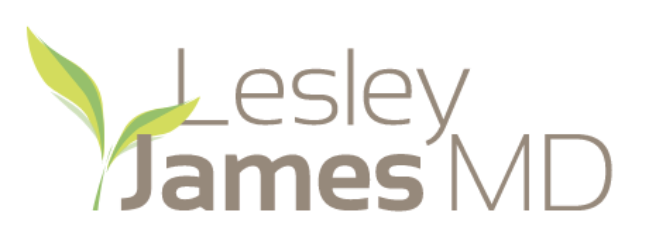As an MD and fellowship-trained Integrative Physician, I am often asked about “health conditions” that are not recognized by the medical community and do not qualify as medical diagnoses for a number of reasons: (a) there may be an evolving theory that has not been thoroughly researched, and/or (b) there may be an oversimplified physiologic process or finding that, while having some science, lacks consistent connections to the disease process or outcomes. Some theories, when fully investigated, may in time come to be recognized while others will not – the scientific method is a lengthy process. When approached with these “conditions,” I often find myself “somewhere in between” and I continually pour over new research outcomes in an effort to treat patients who are feeling unwell. While I am sympathetic to those who are frustrated with the pace of medicine and the lack of answers pertaining to their health, we must remember that little truths that are strung together produce interesting headlines, but do not make for sound medical practices. This is the final entry in a three-part series.
Estrogen Dominance
“Estrogen Dominance” is an inaccurate term coined by a family physician, John R. Lee MD, who described relatively low progesterone/estrogen in perimenopausal women, theorizing that this relative deficiency of progesterone explained symptoms that perimenopausal women experienced and advocated for the use of progestogens. His writings were self-published and he gained a lot of followers, but his ideas about “hormone balancing” were not backed up by any clinical data or published research. The term “estrogen dominance” is now loosely used to encompass a lengthy list of symptoms and conditions, including:
- fibroids/endometriosis
- infertility
- breast cancer
- environmental exposure to endocrine disruptors
- many more
What We Do Know
Women experience wide fluctuations in hormones during perimenopause, and it is suspected – not proven – that these swings may contribute to flushes/hot flashes.
A normal menstrual cycle has elevated estrogen/progesterone ratios, and most women’s lives are spent in what some would categorize as “estrogen dominance,” the follicular phase of the menstrual cycle.
Medical conditions such as polycystic ovarian syndrome and anovulatory cycles often include an imbalance in hormone levels, which is what a physician might think of when the term “estrogen dominance” is used. These conditions, however, are much more complex.
Some practitioners, when referring to “estrogen dominance,” think about the impact of endocrine disruptors and the impact of environmental chemicals such as phthalates. Other practitioners think about the influence of diet on hormone levels.
The wide application of this term to explain a variety of conditions gives evidence to its inaccuracy as a true medical condition.
What We Don’t Know
Menopause
We do not have a precise pathophysiology for many menopausal symptoms, particularly hot flashes, which we believe are due, in part, to fluctuating estrogen levels during menopausal transition. The theory that broad swings of estrogen in perimenopause cause symptoms is consistent with data presented by Dr. Nanette Santoro, a reproductive endocrinology and infertility specialist, and her colleagues.
Fibroids
We often believe fibroids are the result of too much estrogen, but the development of fibroids is yet another complicated and understudied condition. Estrogen, estrogen receptors and signaling are thought to be involved, however, other theories are emerging regarding progesterone, cholesterol and renin angiotensin (vasculature) pathways, along with endocrine disruptors.
Breast Cancer
Another area of confusion I often see in my practice is the relationship of estrogen/progesterone and hormone receptors and the development and treatment of breast cancer. While studies have also shown that a woman’s risk of breast cancer is related to the estrogen and progesterone exposure over a lifetime and that hormone-blocking medications are beneficial for receptor-positive breast cancer, this is by no means evidence that cancer is caused by “estrogen dominance.”
Endometriosis
While elevated estrogen clearly has a role in maintaining endometriosis, there is no evidence that “estrogen dominance” is the cause, and physicians should evaluate factors such as inflammation, genetics, environment, the immune system, etc. More research in pathophysiology is needed for endometriosis, another complex and poorly understood disorder.
Polycystic Ovarian Syndrome (PCOS)
Often described as an “estrogen dominant” condition, PCOS is better categorized as a metabolic disorder that includes a number of hormone imbalances, excess androgens, an imbalance of LH/FSH, low sex hormone binding globulin and, for some women, excess estrogen. This complex condition is one of the most common endocrinopathies, with research estimating that it affects 5-10% of American women of child-bearing age.
What We Can Do
Education
Use correct terminology, acknowledge what we don’t know, avoid unnecessary testing and support research that focuses on the unique physiology of women.
Appropriate Use of Hormone Therapy and Testing
Work with physicians to determine your best regimen and understand the risks and benefits. When hormones are used to treat menopausal symptoms, the goal is to create a steady state of hormones, and it is believed when the brain is signalled, symptoms are reduced. Therefore, there is no need for measurement, as hormones help to decrease swing by a negative feedback loop, not by “balancing hormones.” Estrogen, estrogen with progesterone and only progesterone preparation can do this, so discuss with your physician which regimen is the most appropriate for your body.
Diet, Stress, Sleep and Exercise
There is no diet specific to hormone balancing, although you will often see recommendations on various websites. These diets are fads and are based on very little research. Small studies show a plant-based diet may have a beneficial impact for women with fibroids who are menopausal. My recommendation is to eat an anti-inflammatory, fiber-rich diet of mostly plants and to avoid processed foods.
Reduce exposure to endocrine disruptors (it is almost impossible to avoid them completely).
Addressing stress, getting ample sleep and exercising are the best things you can do for your health and are often not given enough of our time or attention.
Conclusion
While a quick internet search will uncover many practitioners who are self-proclaimed specialists in “estrogen dominance,” it is nearly impossible to find mention of or research on the topic in medical literature. Furthermore, a search of PubMed reveals almost nothing on the subject, which is another cause for concern.
Each of the vague terms I’ve explored in this “Somewhere In Between” series are pet peeves of mine, as they do little to further research and they tend to divide practitioners. However, I feel strongly that this term in particular, “estrogen dominance,” is damaging to the advancement and understanding of health conditions unique to women. It is over simplistic to blame everything on estrogen and a relative lack of progesterone, as women’s hormones are beautifully complex.
Worth Reading
Adel, T., Brown, J.R., Santoro, N., et al., Characterization of reproductive hormonal dynamics in the perimenopause, The Journal of Clinical Endocrinology & Metabolism/1996
Hormones Demystified: Separating Endocrinology from Quackery, https://hormonesdemystified.com, 2021
Lee MD, John R, https://www.johnleemd.com/estrogen-dominance.html, 1990-2021


